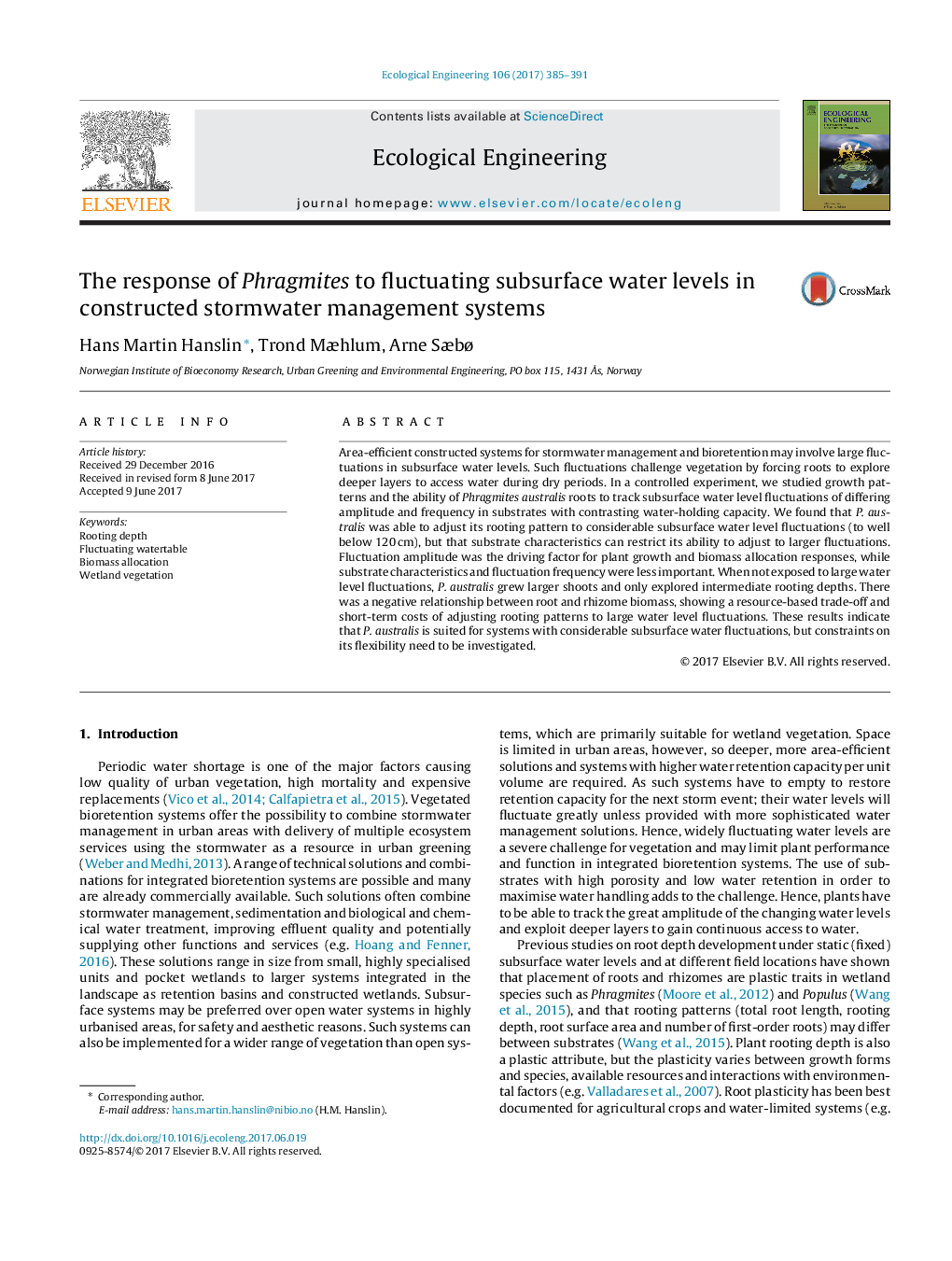| Article ID | Journal | Published Year | Pages | File Type |
|---|---|---|---|---|
| 5743855 | Ecological Engineering | 2017 | 7 Pages |
Area-efficient constructed systems for stormwater management and bioretention may involve large fluctuations in subsurface water levels. Such fluctuations challenge vegetation by forcing roots to explore deeper layers to access water during dry periods. In a controlled experiment, we studied growth patterns and the ability of Phragmites australis roots to track subsurface water level fluctuations of differing amplitude and frequency in substrates with contrasting water-holding capacity. We found that P. australis was able to adjust its rooting pattern to considerable subsurface water level fluctuations (to well below 120Â cm), but that substrate characteristics can restrict its ability to adjust to larger fluctuations. Fluctuation amplitude was the driving factor for plant growth and biomass allocation responses, while substrate characteristics and fluctuation frequency were less important. When not exposed to large water level fluctuations, P. australis grew larger shoots and only explored intermediate rooting depths. There was a negative relationship between root and rhizome biomass, showing a resource-based trade-off and short-term costs of adjusting rooting patterns to large water level fluctuations. These results indicate that P. australis is suited for systems with considerable subsurface water fluctuations, but constraints on its flexibility need to be investigated.
